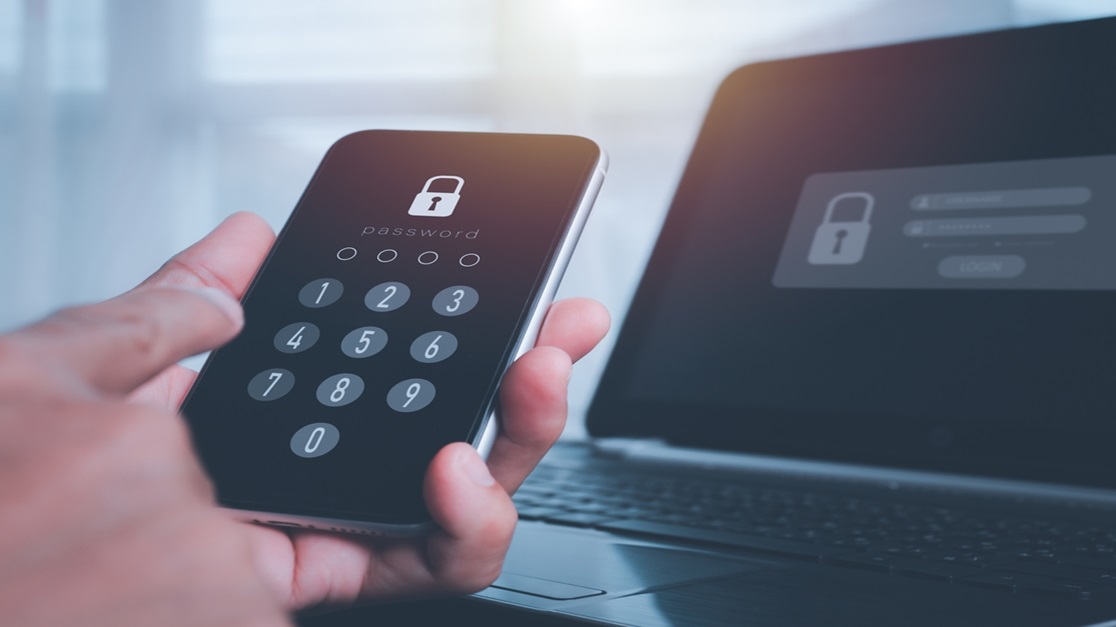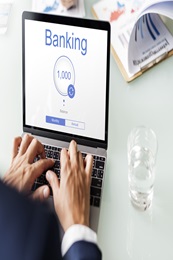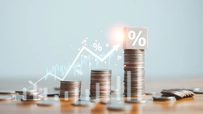Savings Accounts and Digital Privacy: Keeping Your Money Safe Online
April 18, 2025

In today's digital age, online banking has revolutionised how we manage our money. With just a few taps on our smartphones, we can check balances, transfer funds, and pay bills. But while Digital Savings Accounts offer unparalleled convenience, they also come with privacy risks,
Primarily because of the significant rise in online and phishing scams. This blog post aims to provide you with valuable information on how to keep your money safe online
4 Ways to Keep Your Savings Account Safe Online
1. Create a Strong Password
Your online banking password is the first line of defence against unauthorised access. Avoid using obvious words, personal information, or short passwords. Instead:
- Use a mix of uppercase and lowercase letters, numbers, and symbols.
- Make it at least 10 characters long.
- Avoid personal details like birthdays or names.
- Use a unique password for each account.
- Change it every 3-6 months.
2. Enable Two-Factor Authentication
Two-factor authentication (2FA) adds an extra layer of security. With 2FA enabled, you'll need to provide a second form of verification, such as:
- A code sent via SMS to your phone
- Biometric data like a fingerprint scan
- A physical security key
Here's how it works: Let's say a hacker manages to crack your password. The bank will ask for the 2FA code when they try to log in. They'll be locked out unless the hacker can access your phone or security key.
3. Be Wary of Public Wi-Fi
While public Wi-Fi networks are convenient, they pose significant risks to your online security. Hackers can intercept sensitive information transmitted over unencrypted networks or set up malicious hotspots to capture your data.
To protect yourself:
- Avoid using online or mobile banking services when connected to public Wi-Fi.
- Disable public file sharing on your devices.
- Stick to secure websites (look for "https" in the URL) and use a virtual private network (VPN) for added protection.
4. Set Up Banking Alerts
Banking alerts are an essential tool in detecting and preventing fraudulent activities on your savings account. By signing up for alerts, you'll receive instant notifications of suspicious or unauthorised transactions.
You can opt for alerts such as:
- Low or high balance notifications
- New credit or debit transactions
- Password changes
- Personal information updates
5. Be Cautious of Phishing Scams
Phishing scams trick users into revealing personal information. Be wary of emails, messages, calls that request sensitive information or redirect you to unfamiliar websites. Always verify the authenticity of the communication by contacting your bank directly through official channels.
6. Keep Your Devices Secure
Ensure that the devices you use to access your Digital Savings Account are secure. Install reliable antivirus software and keep it updated. Avoid using public Wi-Fi networks for financial transactions as these can be less secure and more vulnerable to interception.
What is Two-Factor Authentication (2FA)?
Two-factor authentication (2FA) requires an additional verification step beyond your password, such as a code sent to your phone or generated by an app. This added layer of security makes it more difficult for unauthorised users to access your account.
Final Thoughts
In today's digital world, keeping your money safe online is paramount. Strive to maintain digital privacy for your savings account. For any suspicious transactions, inform your bank immediately.
If you're just starting out in your savings journey, opening a Savings Account with Ujjivan Small Finance Bank can be a good start. We have a wide variety of Savings Accounts catering to different financial needs - sign up for the one that meets your financial goals. Alternatively, you can browse through Ujjivan SFB product suite - our wide range of financial products are designed to make your financial life better.
FAQs
1. Can I monitor my Digital Savings Account for unauthorised transactions?
For every transaction, deposit or withdrawal, banks send communication vis SMS or mail. Keep a track of all communications sent by the bank. For any unauthorised transactions, contact your bank immediately.
2. How can I ensure the security of my Digital Savings Account when using a public Wi-Fi network?
Avoid accessing online banking services and sensitive information when using public Wi-Fi networks to ensure the security of your digital savings account.
3. Can I change my Digital Banking password through the mobile app?
Yes, most mobile banking apps allow you to change your password directly within the app. Look for the "Settings" or "Security" section to locate the password change option.
4. How often should I update my passwords?
It's a good practice to update your passwords regularly, ideally every 3 to 6 months. Additionally, change your passwords immediately if you suspect any security breach.
Latest Blogs

Is Closing Your Home Loan Early Good or Bad for Your Credit Score?
April 15, 2025
In the world of personal finance, owning a home is often seen as the pinnacle of financial stability.

Telangana Housing Board & KPHB Colony: A Guide to Affordable Urban Housing in Hyderabad
March 14, 2025
As Telangana continues its rapid urbanisation journey, two key housing entities—Telangana Housing Board (THB) and Kukatpally Housing Board Colony (KPHB)—have played critical roles in shaping the state's real estate ecosystem.

Does Checking CIBIL Score Frequently Lower Your Credit Points?
April 07, 2025
Imagine you're planning to apply for a home loan, a credit card, or even a car loan. Naturally, you want to ensure your CIBIL score is in good shape before proceeding.

7 Steps to Get Started Your Home Loan Application Process in India
April 16, 2025
Buying a home is one of the biggest dreams for most of us. But with rising property prices, it's not always possible to pay the full amount upfront. That’s where a home loan in India becomes a helpful option.

How to Keep Your Money Growing in a Volatile Market: A Comprehensive Guide
April 15, 2025
The Indian financial landscape in early 2025 has been quite unpredictable. According to Reuters, equity mutual fund inflows slumped to an 11-month low in March 2025 due to growing concerns around sectoral imbalances and global uncertainties.

Is Closing Your Home Loan Early Good or Bad for Your Credit Score?
April 15, 2025
In the world of personal finance, owning a home is often seen as the pinnacle of financial stability.

Telangana Housing Board & KPHB Colony: A Guide to Affordable Urban Housing in Hyderabad
March 14, 2025
As Telangana continues its rapid urbanisation journey, two key housing entities—Telangana Housing Board (THB) and Kukatpally Housing Board Colony (KPHB)—have played critical roles in shaping the state's real estate ecosystem.

Does Checking CIBIL Score Frequently Lower Your Credit Points?
April 07, 2025
Imagine you're planning to apply for a home loan, a credit card, or even a car loan. Naturally, you want to ensure your CIBIL score is in good shape before proceeding.

7 Steps to Get Started Your Home Loan Application Process in India
April 16, 2025
Buying a home is one of the biggest dreams for most of us. But with rising property prices, it's not always possible to pay the full amount upfront. That’s where a home loan in India becomes a helpful option.

How to Keep Your Money Growing in a Volatile Market: A Comprehensive Guide
April 15, 2025
The Indian financial landscape in early 2025 has been quite unpredictable. According to Reuters, equity mutual fund inflows slumped to an 11-month low in March 2025 due to growing concerns around sectoral imbalances and global uncertainties.

Is Closing Your Home Loan Early Good or Bad for Your Credit Score?
April 15, 2025
In the world of personal finance, owning a home is often seen as the pinnacle of financial stability.




